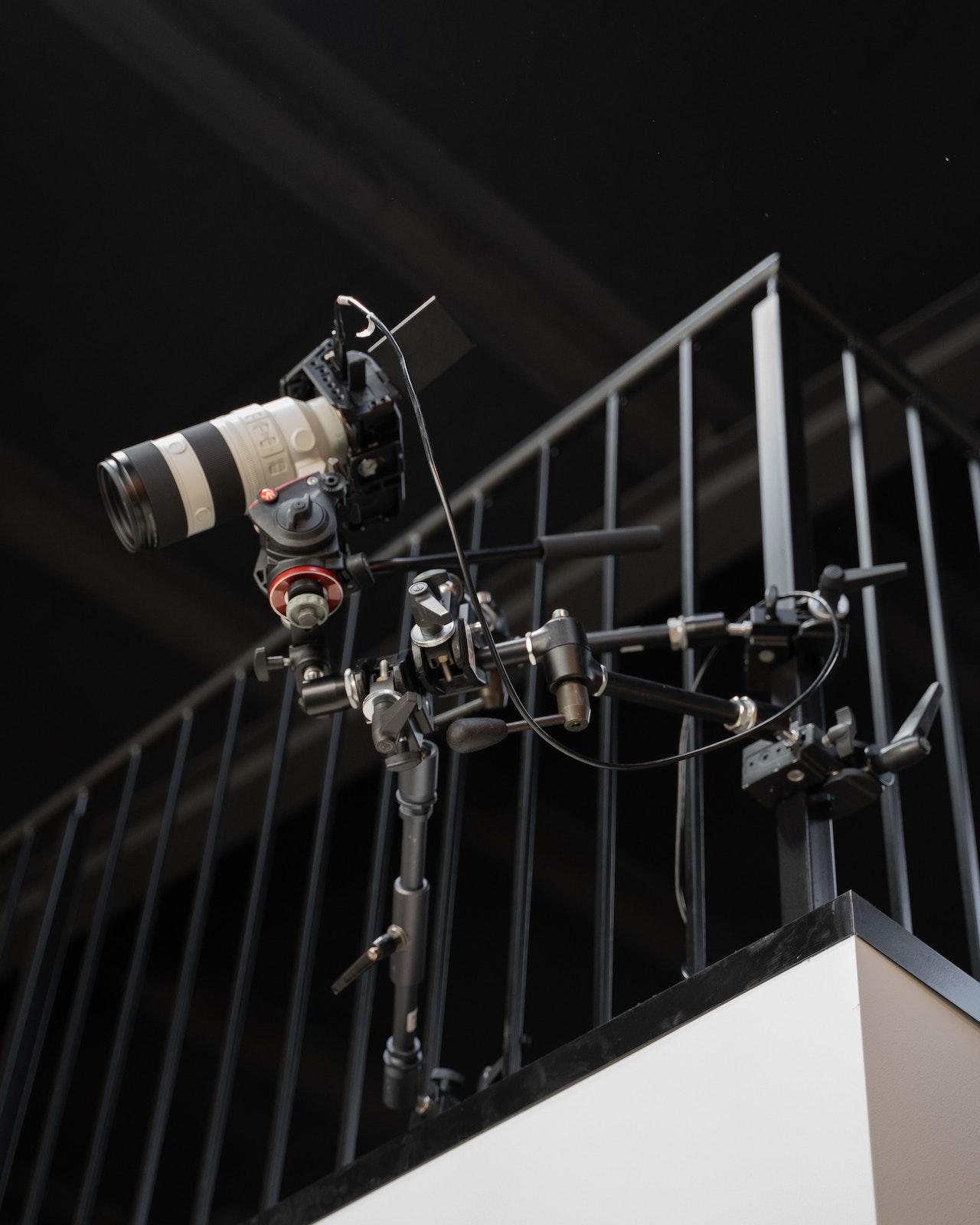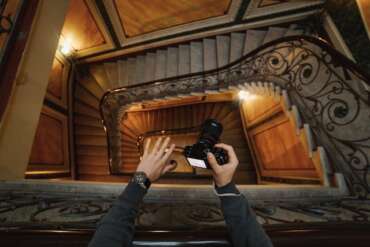Camera Angles: A Powerful Tool for Creating Intimacy and Distance in Film
The world of film-making is an intricate process that involves various elements such as scriptwriting, directing, acting and cinematography. Among these elements, the camera angle is a crucial aspect that can have a significant impact on the overall aesthetic of a scene.
Camera angles refer to the position and angle of the camera in relation to the subject they are filming. It can be used to convey emotions, action, and even create intimacy or distance between characters in a scene.
Explanation of Camera Angles
Camera angles refer to the position and angle of the camera in relation to the subject they are filming. There are several types of camera angles that filmmakers use to convey different moods and emotions within a scene. The most common types of camera angles include close-ups, medium shots, long shots, aerial shots and high-angle shots.
Importance of Camera Angles in Film-making
Camera angles play an essential role in establishing various aspects of film-making like setting up scenes or characters’ emotions. When used effectively, it can elevate a scene from being merely good to exceptional by conveying specific messages or intensifying emotion at critical points within a narrative arc. Understanding how cameras can be used for different effects is crucial when creating great films.
The use of camera angles is an essential tool for any filmmaker looking to create intimacy or distance between characters in a film scene. With close-up shots allowing viewers to feel like they are part of an intimate conversation while long shots create distance by showing more context around characters, it’s no wonder why this technique has become so popular among filmmakers worldwide!
Introduction
Camera angles are a crucial aspect of filmmaking, utilized by directors to convey meaning and emotion to the viewer. They are used to capture the perspective of a character or an environment in a scene.
These angles help the audience gain a better understanding of what is happening and how characters are feeling during any given moment. Camera angles allow for more depth and dimension in storytelling, making it more engaging for viewers.
Explanation of Camera Angles
Camera angles refer to the positioning of the camera when filming a scene. There are several different types of camera angles that can be used to create different effects on viewers such as close-up shots, long shots, low angle shots, high angle shots among others.
Each angle has its own unique characteristics that can be utilized by filmmakers depending on their desired effect. Close-up shots are used to show details on an object or person’s face, emphasizing key features such as eyes or mouth expressions.
They can be used to create intimacy between characters by drawing attention to their emotions and expressions. Long shots give context about what is happening in the environment around the characters in a scene.
This style is often used during establishing scenes or establishing shots at locations. Low-angle shots make characters appear taller and more powerful while high-angle views create distance between characters and emphasize their vulnerability.
Importance of Camera Angles in Filmmaking
The importance of camera angles lies in their ability to convey meaning without relying solely on dialogue or action taking place within a scene. Through camera placement and movement, filmmakers have control over what they want viewers to see and feel about specific situations.
Filmmakers also use these techniques to manipulate emotional responses from audiences with relative ease. For example, using low-angle shots makes characters look bigger than usual which makes them appear like superheroes while high-angle views could make them seem small or weak which could evoke empathy from viewers.
To conclude, camera angles are an essential aspect of filmmaking. They are used to create a sense of intimacy or distance between characters in a scene.
Through the use of different camera angles, filmmakers can convey meaning and emotion to the viewer without relying solely on dialogue or action-taking place within a scene. Camera angles offer another dimension to storytelling, making it more engaging and captivating for viewers. In case you want to learn more about camera work, we wrote these articles that you will find very useful:
Creating Horror Tension: Camera Angles and Visual Language”
.Camera Angles: Conveying Emotions & Mood
Power Dynamics: Low-Angle Shots vs. High-Angle Shots
Mastering Camera Angles: Captivate through Unique Perspectives
Creating Intimacy through Camera Angles
Camera angles play a crucial role in creating intimacy between characters in a scene. One of the most effective ways to do so is through close-up shots. A close-up shot is a technique used to focus on the details of a character’s face, conveying their emotions and expressions to the audience.
This shot is particularly effective in intimate scenes where it is important to capture the subtleties of the characters’ expressions and reactions. In the film “The Godfather”, there is an iconic close-up shot that captures Michael Corleone’s expression as he decides to commit murder for his family.
The shot starts with Michael sitting at a restaurant table, listening to his father talking about business. As Michael thinks about his decision, the camera moves closer and closer until it reaches his face, capturing every detail of his expression as he contemplates what he is about to do.

This close-up shot effectively conveys Michael’s emotions and inner turmoil, creating an intimate connection between him and the audience. Another technique used to create intimacy between characters in a scene is over-the-shoulder shots.
An over-the-shoulder shot involves positioning the camera behind one character’s shoulder so that we see what they see while also seeing their face and body language in the foreground. This type of shot helps establish spatial relationships between characters while also conveying their emotions.
One example of how an over-the-shoulder shot can be used to create intimacy can be seen in “Before Sunrise”. In this film, Jesse and Celine are walking around Vienna getting to know each other.
During one scene at a record store, there is an over-the-shoulder shot where we see Jesse looking at Celine as she browses through records in front of him. The camera angle emphasizes both their faces and body language while also showing us what they are seeing from each other’s perspective, creating a sense of closeness between them that draws the audience in.
Close-up Shots
Close-up shots are an incredibly versatile and powerful tool for filmmakers when used correctly. These shots can be used to capture the smallest details of a character’s face, from subtle expressions to tears running down their cheeks. By highlighting these details, close-up shots help convey the emotions and inner workings of a character’s mind to the audience.
One example of how close-up shots can be used to create an intimate connection is in “The Silence of the Lambs”. In this film, there are several close-up shots of Clarice Starling’s face as she interviews Hannibal Lecter.
These shots help convey her fear and discomfort as she interacts with one of the most notorious serial killers in history. Without these close-ups, it would have been difficult for the audience to empathize with Clarice and understand what she was going through in such a tense situation.
Another way that close-up shots can be effective is by highlighting specific facial features that convey emotion. In “The Curious Case of Benjamin Button”, there is an intimate scene where Benjamin Button tells Daisy how much he loves her.
The camera focuses on his eyes as he speaks, capturing every nuanced expression on his face including tears streaming down his cheeks. This shot effectively conveys Benjamin’s intense emotions while also creating an emotional connection with the audience.
Over-the-Shoulder Shots
Over-the-shoulder shots are another technique used by filmmakers to create intimacy between characters in a scene. This type of shot places one character’s POV (point-of-view) over their shoulder onto another character in front of them, allowing us to see both their facial expressions and what they are looking at simultaneously. In “Lost in Translation”, there is a scene where Bob meets Charlotte at her hotel bar for drinks.
As they talk and get to know each other, there is an over-the-shoulder shot that captures both of their faces and the bar behind them. This shot emphasizes their personal connection while also placing them in a larger context, helping to convey their vulnerability and loneliness amidst the bustling activity around them.
Another way that over-the-shoulder shots can be used to create intimacy is by showing us how characters relate to each other spatially. In “The Graduate”, there is a scene where Ben meets Mrs. Robinson for the first time in her house.
As they sit and talk in her living room, there are several over-the-shoulder shots that show us how they are positioned relative to each other. These shots help establish power dynamics between the characters, emphasizing Mrs. Robinson’s control of the situation while also conveying Ben’s discomfort.
Overall, close-up shots and over-the-shoulder shots are powerful techniques used by filmmakers to create intimacy between characters in a scene. By leveraging camera angles and facial expressions, these shots can convey emotions and relationships with subtlety and nuance that draw audiences into the story on a deeper level.
Creating Distance through Camera Angles
Long Shots: Capturing the Big Picture
Long shots are shot from a greater distance than medium shots and close-ups, which tend to focus on the subject’s face or body. In a film, long shots are often used to establish location or context and show the environment around the character. Long shots can be used to create distance between characters as well.
When two characters are shown in a long shot, they appear physically far apart, which creates visual tension and highlights their differences. For example, in “The Social Network,” when Mark Zuckerberg is talking with his former best friend Eduardo Saverin about diluting his shares of Facebook stock, the camera cuts back and forth between close-ups of their faces and a long shot of them sitting at opposite ends of a long table.
The long shot emphasizes their physical distance, which reflects their emotional separation as well. Additionally, another example of how long shots can create distance is through showing vast landscapes or environmental factors that dwarf humans – this sets up an inherent power dynamic that reinforces themes of helplessness or insignificance in certain genres (think apocalyptic films where humanity is helpless against Mother Nature).
High Angle Shots: Seeing Characters from Above
High angle shots are filmed from above the subject with the camera looking down on them. This creates an impression of dominance and power over the subject.
High angle shots can also be used to create visual distance between characters by emphasizing one character’s position relative to another. For instance, in “Star Wars: Episode IV – A New Hope,” Darth Vader is often filmed from high angle shots when he interacts with other characters like Princess Leia or Grand Moff Tarkin.
This elevated framing emphasizes his power over them and reinforces his intimidating presence. Another example could be a scene where two characters have an argument; if one character is framed in a high angle shot and the other in a low angle shot, this suggests an imbalance of power between them.
Conclusion
Camera angles are a powerful cinematic tool that can be used to create intimacy or distance between characters. Through close-ups and over-the-shoulder shots, filmmakers can emphasize emotions and relationships, while long shots and high angle shots can create distance by showing the environment or emphasizing power dynamics. By using various camera angles, directors can manipulate the audience’s perception of a scene, heightening tension or creating dramatic irony.
Ultimately, understanding how to use camera angles effectively allows filmmakers to tell more compelling stories while engaging audiences on a deeper level. Regardless of whether they’re used to create intimacy or distance, the right camera angles can elevate a film from good to great by giving viewers a unique perspective on the characters and their lives.

I am a highly experienced film and media person who has a great deal to offer to like-minded individuals. Currently working on several exciting projects, I am a film and media practitioner for over a decade. I have achieved a great deal of success in my professional career.


Comments are closed